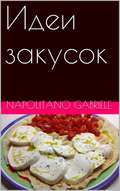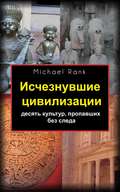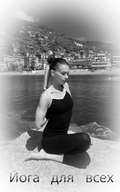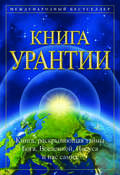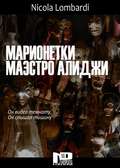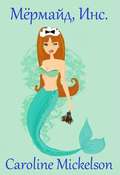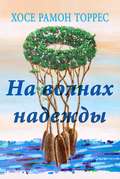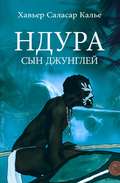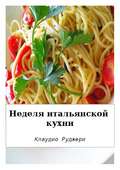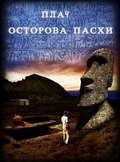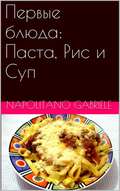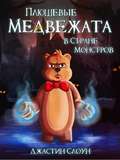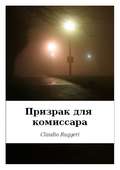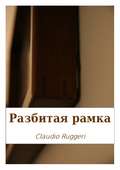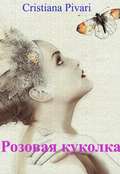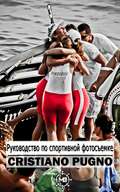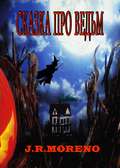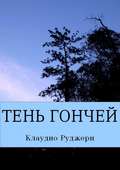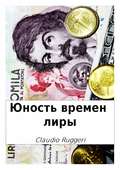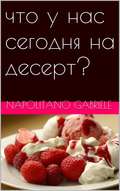- Table View
- List View
Идеи закусок
by Gabriele NapolitanoТрадиционные итальянские закуски, начните свой обед или ужин поистине оригинально.
Исчезнувшие Цивилизации: Десять Культур, Пропавших Без Следа
by Michael Rank Simeon LeyzerzonАвтор известного бестселлера "Великие Генералы Истории" представляет свою новую работу о бесследно исчезнувших великих культурах древности, и о том как они преследуют нас и сегодня. От погибшей Атлантиды Платона, высокотехнологической утопии, поглощённой океаном всего за один скорбный день и американской колонии Роанок, чьих жителей поглотили дикие леса неосвоенного континента, до древних исследователей Америки, прибывших на континент за две тысячи лет до Колумба - исчезновение этих обществ загадочны и неправдоподобны. В книге описаны десять цивилизаций, когда то существовавших, а сейчас полностью исчезнувших. Некоторые из них на века опередили соседей в развитии, другие оставили для нас неразрешимые тайны. Книга предлагает версии различных гипотез о том, как культуры, длившиеся веками, могут бесследно изчезнуть, а также и полезные уроки, которые мы, современные жители планеты земля, можем из этих исчезновений для себя извлечь.
Йога Для Всех
by Вероника Иванова Cristiano PugnoИллюстрированное руководство. Десять основных поз йоги для начинающих.
Книга Урантии
by Urantia FoundationYou have just discovered the literary masterpiece that answers your questions about God, life in the inhabited universe, the history and future of this world, and the life of Jesus. The Urantia Book harmonizes history, science, and religion into a philosophy of living that brings new meaning and hope into your life. If you are searching for answers, read The Urantia Book! The world needs new spiritual truth that provides modern men and women with an intellectual pathway into a personal relationship with God. Building on the world's religious heritage, The Urantia Book describes an endless destiny for humankind, teaching that living faith is the key to personal spiritual progress and eternal survival. These teachings provide new truths powerful enough to uplift and advance human thinking and believing for the next 1000 years. A third of The Urantia Book is the inspiring story of Jesus' entire life and a revelation of his original teachings. This panoramic narrative includes his birth, childhood, teenage years, adult travels and adventures, public ministry, crucifixion, and 19 resurrection appearances. This inspiring story recasts Jesus from the leading figure of Christianity into the guide for seekers of all faiths and all walks of life. This book is a revelation.
Марионетки Маэстро Алиджи
by Nicola Lombardi Elena ChemoginaThe second time I upload it.Elena ChemoginaТеатр марионеток. Древний скрытый ужас вовлечёт маленького Тобиа в бесконечный кошмар.Серия произведений Innesti от Nero Press Edizioni окрашивается в ещё более красно-кровавый цвет в новом пугающем рассказе Николы Ломбарди о марионетках Маэстро Алиджи. Это история, рассказывающая о самых простых ощущениях и сокровенных страхах ребенка.Маленький Тобиа с нетерпением ждёт спектакля поразительного Маэстро Алиджи и его кукол. Когда ему выпадает возможность попасть в фургон кукловода и прикоснуться к великолепным куклам, мальчик не колеблясь принимает предложение, тем более, что приглашение исходит от Кати, девочки, к которой его тянет с совершенно необъяснимой силой. Вход в этот мир станет прелюдией к кошмару без конца.
Мёрмайд, Инс. (Романтическая комедия)
by Marina De Puig Smirnova Caroline MickelsonКатегорически протестуя против коммерческого китобойного промысла, Миранда с радостью соглашается поменять русалочий хвост на человеческие ноги, когда ей представляется возможность поработать в качестве горничной в доме человека, ответственного за связи с общественностью, работающего на важную японскую китобойную фирму. Миранда скоро узнает, что ей намного больше нравится педикюр и стильные бикини, чем чешуя русалочьего хвоста, и что она превращается в настоящее стихийное бедствие, когда дело доходит до домашних дел. Но в человеческом мире много того, чего она не знает и не понимает. Почему при виде Джастина Локхида, её привлекательного босса, её сердце бьётся быстрее и её коленки слабеют? Как она поступит, когда ей придётся выбирать между выполнением возложенной на неё миссии и разрушением карьеры Локхида?
На волнах надежды
by Adelaida Arias Аделаида Ариас Arias José Ramón Torres"Из этой страны надо уезжать!" Анхель представить не мог, что окажется в таком положении: полуголодный, измотанный, неуверенный, что проживет еще один день. Но будущее близких бесценно. Повесть "На волнах надежды" пропитана ромом и кубинскими сигарами, сексом и наркотиками, домино и болеро, тем, чем жила Куба между тремя волнами эмиграции кубинцев в Соединенные Штаты Америки. Это просто книга о Кубе, которая не принимает сторону правых или левых, а просто рассказывает о людях, стесненных обстоятельствами. Это дань нынешним мигрантам, их надеждам и их жертвам.
Ндура. Сын джунглей.
by Javier Salazar Calle Альберто Гарсия СамсоновКогда обычный человек, любой из нас, вдруг оказывается на грани жизни и смерти, один, посреди непроходимых джунглей, он сможет выжить? Именно такая незамысловатая дилемма стоит перед героем нашей истории. Возвращаясь из отпуска, после заурядного сафари на джипах с фотоаппаратом в Намибии, он вдруг оказывается на грани выживания, после того, как их самолет был сбит какими-то повстанцами и упал в девственных джунглях Итури, в Республике Конго. Словом, наш герой нежданно-негаданно оказывается там, где дикая природа - отнюдь не единственный смертельный враг, и где просто выжить - далеко не единственная сверхзадача. Повествование, выдержанное в духе классической приключенческой литературы, переносит читателя из мира реального в мир, где всё пропитано тревогой и отчаянием главного героя от навалившихся на него несчастий. В этой книге естественным образом переплетаются между собой человеческие эмоции и нечеловеческое напряжение в борьбе за жизнь. По мере развития сюжета психологическая деградация героя гармонично вписывается в подробное описание окружающей его прир�
Неделя Итальянской Кухни
by Claudio Ruggeri Вероника ИвановаРецепты приготовления различных блюд итальянской кухни.Подборка рецептов простых и не очень, «украденных» из меню великого повара -- моей мамы.
ПЛАЧ ОСТРОВА ПАСХИ
by Jose Vicente Alfaro Svetlana Lomakina de LeivaИспанский археолог становится частью амбициозной экспедиции, призванной с помощью археологических раскопок приоткрыть завесу тайн, окутывающих историю острова Пасхи. Жестокое убийство и желание совершить сенсационное антропологическое открытие приведут его к тому, что он окажется в центре заговора, главным героем которого ему придётся невольно оказаться. Хосе Висенте Альфаро предлагает нам совершить путешествие, полное загадок, к одному из самых захватывающих мест планеты. Страницы его книги дадут нам возможность познакомиться с культурой рапануи, с историей острова Пасхи, остановившись на её самых значительных эпизодах: загадочное происхождение его первых поселенцев, создание и транспортировка выдающихся статуй моаи, жестокие междуусобные войны, культ Человека-птицы, нерасшифрованная иероглифическая письменность, контакты с первыми европейскими путешественниками и евангелизация, осуществлённая католическими миссионерами, незадолго до аннексии острова к Чили в конце XIX века. Осмелитесь ли Вы разгадать бережно хранимый секрет острова Пасхи?
Первые блюда: Паста, Рис и Суп.
by Gabriele NapolitanoМножество рецептов одной итальянской мамы, чтобы приготовить по-настоящему вкусные, быстрые и изысканные первые блюда.
Плюшевые медвежата в Стране Монстров
by Simeon Leyzerzon Justin SloanПлюшевые медвежата спасают детей. Эта и другие книги Джастина Слоуна из его серии приключенческих книг для малышей доступны на его страничке в интернете: www.JustinSloanAuthor.com Чтобы спасти своего хозяина, однажды похищенного во мраке ночи, плюшевый мишка вынужден отправиться на его поиски в Страну Монстров. Оказывается, беда случилась не только с ним одним - угроза нависла над всеми детьми. Добро пожаловать в мир, где плюшевые медвежата по ночам оживают, вставая на защиту своих хозяев-детей от монстров мрака, подстрекаемых гоблинами и орками. Эта первая книга трилогии привлечёт маленьких любителей приключений, которым по душе фантастика в стиле мультфильмов Пиксара и Уолта Диснея, а те, кто повзрослее, несомненно распознают в ней параллели с балладами об Орфее и с дантовским адом. Пристегните ремни и приятного Вам путешествия!
Призрак для Kомиссара
by Claudio Ruggeri Ирина Марусик-МиоттоКомиссар Винсент Джермано принадлежит к полицейским старой школы. Родившись в Сан Франциско, он уже двадцать лет живёт в Италии и не собирается ничего менять в своей жизни. В провинции Кастелли Романи, к югу от Рима, происходят преступления, подвергающие проницательность комиссара и его помощников нешуточным испытаниям. Речь идёт о «дополнительном времени» для футбольного арбитра и об исчезнувшей девушке...
Разбитая Рамка
by Claudio Ruggeri Вероника ИвановаЧеловек найден мертвым в собственной художественной галерее. Винсент Джермано призван распутать клубок из многих возможных версий. Комиссар должен провести расследование тронутое грустью.
Розовая куколка
by Надежда Терлецкая Cristiana PivariДевушка в поисках своего личного счастья. Что такое жизнь? Спасение от себя самой, отвечает Сильвия, тридцать пять более, чем красивая, девушка, которая не чувствует себя не женщиной ни девочкой, писатель или, возможно, писака, куколка, которая возможно, в один прекрасный день, станет бабочкой, но в свое время и в ее порядке. Добьется успеха? Не обязательно, может быть, не так важен, конечный результат, но поиск себя, который ведет Сильвию к подругам и возможным мужчинам ее жизни между границами гротеска и вилянием ее волосатой собаки, заполняет книгу жизненной сутью она незаменима. Итальянская Бриджет Джонс? Только частично, даже если есть личные мании, слабости и причуды жизни, и хорошая доза сарказма в их наблюдении. Более чем Бриджит, Сильвия представляет сегодняшних вечных девушек, придает глубину их мыслям, показывает их тревоги и цели. В конце концов, можно остаться куколкой на всю жизнь, если нет уверенности превратиться в особенную бабочку.
Руководство По Спортивной Фотосъемке
by Вероника Иванова Cristiano PugnoРуководство для тех, кто впервые решил заняться спортивной фотосъёмкой. Содержит практические советы по некоторым наиболее распространённым видам спорта.
Сказка Про Ведьм
by JOSE RAMON MORENO BERMEJO Валентина МазийСогласно легенде ужасные ведьмы забирали с собой всех детей из близлежащих деревень, которые не спали после десяти часов вечера. Летая на своих мётлах, ведьмы на больших расстояниях чуяли тех детей, которые ещё бодрствовали, и, проникая через окна и балконы, похищали их, чтобы держать в качестве слуг в своём логове, Проклятой горе. Ту гору окружал Заколдованный лес. Каждый, кто осмеливался пересечь его, был превращён в камень. И любая попытка родителей спасти своих детей заканчивалась новым несчастьем.Бедных детей ведьмы использовали в качестве прислуги, a тех, кто становился постарше, прекращали кормить и запирали в пещерах, оставляя их там на произвол судьбы.Деревенские жители, большинство из которых были обычными лесорубами, стали отчаиваться. Детей забирали ведьмы, а жителей деревень превращали в лесу в камни: всё казалось было потеряно для них.
Тень Гончей (Расследование Комиссара Джермано)
by Claudio Ruggeri Nadiya TertletskaТело молодой женщины найдено в лесу, с первых улик как мотив и имя убийцы представляется очевидным для всех, кроме как для Винсента Джермано, комиссар решит провести расследование.
Юность Времен Лиры
by Claudio Ruggeri Imran NazirovВстреча двух друзей в один из летних дней, в которой более молодой будет слушать анекдоты и рассказы другого о мире, который исчез всего лишь вчера, но больше уже никогда не сможет существовать, во времена которого часто можно было услышать фразу «Я без единой лиры...»
что у нас сегодня на десерт?
by Gabriele NapolitanoНе знаешь, что приготовить сегодня на десерт? Эта книга создана специально для тебя. Она содержит более тридцати рецептов, взятых из секретной записной книжки одной итальянской мамы.
